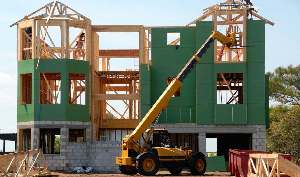
The RBNZ figures show residential property loans hit $2.77 billion in October, down from $3.3 billion the same month last year.
The lacklustre numbers come as pressure mounts on the government to build more houses to satisfy nationwide demand.
Housing Minister Megan Woods has delayed a plan to set up a $250 million Residential Development Response Fund to kick-start housing projects across the country.
The minister said this week the project had been delayed as there was less urgency due to the strong Covid recovery.
The RBNZ data suggest the flow of money from the quantitative easing programme has not flowed through to development projects.
Ian Webb, of NewBuild Home Finance Limited, said there needed to be less emphasis on tax and demand-side measures to cool the housing market, and more of an onus on making it easier to build new homes.
"The government has almost entirely missed the opportunity to balance supply with demand, and seem determined only to dampen demand," Webb said. "But supply is the best way to rebalance prices. The NZ Government, and the RBNZ have almost entirely ignored how to free up land through regulatory easing, and to reduce costs of new homes, which some builders estimate may cost upward of 30%+ in some form of tax or regulatory costs, from GST to consents to compliance."
Webb would like to see a raft of new measures to stimulate house building in New Zealand.
"It took Pokeno as an example 12 years from planning to the first title. It takes far too long to get resource consent. The Unitary Plan has in many places reduced the ability to subdivide. The council contributions and other costs to subdivide are far too high to make subdivision viable in many areas. Small subdivisions are very [hard] to fund, banks loathe them. While the RBNZ has exempted construction, banks for the most part have not.
"Land is expensive to develop. And it takes too long, so developers reduce their exposure to market forces, economic and bank contractions and bank and regulatory restraints, they ration their release, and almost always miss the market," he added.





Comments
No comments yet.
Sign In to add your comment